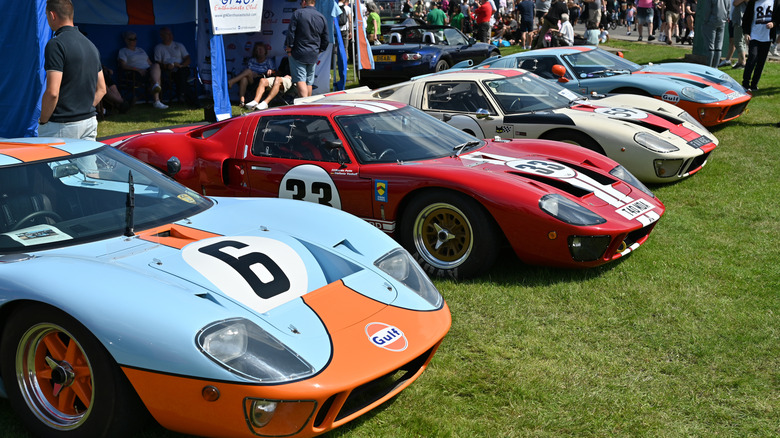Boomers Love New Cars, Gen Z Loves Old Ones – And Hagerty Has Proof
Collecting cars is one of those passions that seems to transcend generations, with older generations having the money to afford such vehicles, and children hanging up posters of their future dream garage and its contents. Cars have always held that universal level of appeal, but with as vast and diverse a topic as automotive history is, naturally some will prefer one over another. There are even stereotypes pervading the scene regarding who collects what — younger generations going for the greatest 1990s JDM icons and older retirees compensating for a midlife crisis with a Corvette, for example. But these are all hearsay, just memes circulating around online or perpetuated by popular movies and whatnot. Which leads us to the core question: What do the actual numbers say?
Naturally, there are a lot of factors which govern automotive ownership in general, much less collecting cars. For one, a distinct separation exists between merely being an owner and collector; the latter implies that you're placing a greater value in the car, whether it's a monetary investment, historical preservation, restoration, or just catching them all. Then there's the question of budget. Put simply, collecting cars in general, unless you're collecting 1990s Nissan Altimas, is generally regarded as one of the most infamously expensive hobbies one can partake in. And not many younger people have that kind of money to drop at auction houses.
Separating all of that, however, Hagerty has discovered one remarkable fact about collectors: according to the data, younger collectors go for older cars, and older collectors seek newer cars. Why is that, though, from a scientific and theoretical perspective? Let's explore and discuss possible reasons, biases, and other factors behind the facts.
Defining the statistics and interpretations
First thing's first, we need to establish what the study means by "young" and "old," both in the context of the cars themselves as well as the collectors purchasing them. We're provided with demographics based on generational differences versus the apparent age of the car, so for example, Generation X is listed as people born between 1965-1981, and they typically purchase vehicles 4.1 years newer than their age. Contrasting this with Gen Z, born after 1997, and they're purchasing cars 24.1 years their senior, meaning cars from the early to mid-1970s on average, right at the tail-end of the Golden Era of muscle cars before the 1973 Oil Crisis.
On the one hand, we can easily say that people often buy their "poster cars" hanging up on the wall, but halo cars today are vehicles like the Audi R8, Lexus LC500, Aston Martin Vanquish, and so on, which is apparently untrue given the data. Moreover, the question of budget has little basis in fact here as well. This is since a good classic muscle car from that era will easily run deep into the five or six-figure territory, as any visit to Mecum or Barrett-Jackson will reveal. Sure, you could take out a loan, but the same goes for new cars and financing.
There are other factors to look at as well when interpreting the data, namely production numbers and distinctiveness. Take a classic Mustang, for example — Ford produced 2,981,259 production Gen 1's, with some years nearly equaling the Gen 6's total production figures across its entire run. These things were everywhere; they're easy to find, simple to modify with a plethora of parts availability, and they're relatively cheap for what they are, making them excellent project cars for younger people looking to get into restoration.
What this means for collecting cars
Because Hagerty is an insurance company, the majority of this data comes from people requesting quotes for coverage of their exotic cars, be it classic or modern, disregarding the initial value of the car. Take, for example, two Ferraris that are listed by Hagerty: the modern SF90 versus the classic mid-1960s 330 GT. At a surface level, these vehicles have little in common other than the prancing horse; one is a modern hypercar that's tight as a drum, and the other is a 2+2 grand tourer with a five-speed and three Weber carburetors.
On the face of it, the 330 GT would appeal to the older demographic, but according to the results, the inverse is true. Despite their similar values, they each have a fairly well-distributed spread. 65% of 330 GT and 42% of SF90 buyers are older, meaning it's nearly a coin-toss despite the tremendous age gap between the cars. This also demonstrates that budget plays little factor in it; older generations having that money to drop whereas younger generations do not is, statistically, untrue at this level (though it may be accurate with a more general consensus).
In truth, the only realistic barrier to collecting cars, classic or modern, is budget. Beyond that, it comes down to individual reasons. For instance, is it investment, with older cars appreciating in value? Is it just personal preference? That's a speculative topic requiring more research, which we'll be excited to report should such a study occur.


